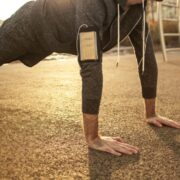Wearables Uncover Hidden Insights Into Overeating in New Study
From late-night fridge raids to “joyful binges,” researchers say wearables may one day unlock personalized ways to curb overeating
A necklace that counts your bites, a wristband that tracks your motions and a bodycam that only turns on when you eat. Northwestern researchers strapped all three to dozens of adults with obesity and uncovered five hidden overeating styles that may shape the next generation of digital health tools.
Researchers at Northwestern University developed a lifestyle medicine program using three wearable sensors (a necklace, a wristband and a body camera) to capture eating behavior in real-world settings while respecting privacy.
“Overeating is a major contributor to obesity, yet most treatments overlook the unconscious habits that drive it,” said Nabil Alshurafa, PhD, associate professor of Preventive Medicine in the Division of Behavioral Medicine and of computer engineering at the McCormick School of Engineering. He is the corresponding author of the study, published this month in NPJ Digital Medicine, part of the Nature portfolio.
For the study, sixty adults with obesity wore the sensors and logged their meal-related mood and context (such as who they were with and what they were doing) through a smartphone app for two weeks. The research generated thousands of hours of data and revealed that overeating falls into five distinct patterns:
- Take-out feasting: gorging on delivery and take-out meals
- Evening restaurant reveling: social dinners leading to excess food intake
- Evening craving: late-night snack compulsion
- Uncontrolled pleasure eating: spontaneous, joyful binges
- Stress-driven evening nibbling: anxiety-fueled grazing
“These patterns reflect the complex dance between environment, emotion and habit,” Alshurafa said. “What’s amazing is now we have a roadmap for personalized interventions.”
The findings could encourage a new diagnostic model, where individuals are profiled into one of the five patterns and given tailored interventions. Alshurafa said his team is already working with clinicians to pilot personalized behavior-change trials.
“What struck me most was how overeating isn’t just about willpower,” said lead author Farzad Shahabi, a PhD student in Alshurafa’s lab. “Using passive sensing, we were able to uncover hidden consumption patterns in people’s real-world behavior that are emotional, behavioral and contextual. Seeing the patterns emerge from the data felt like turning on a light in a room we’ve all been stumbling through for decades. Our long-term vision is to move beyond one-size-fits-all solutions and toward a world in which health technology feels less like a prescription and more like a partnership.”
Alshurafa’s team built a custom camera called HabitSense, a patented Activity-Oriented Camera (AOC) developed after experimenting with a police bodycam. HabitSense uses thermal sensing to record only when food enters its field of view, avoiding broad surveillance. It captures activity rather than scenery, reducing privacy concerns while logging critical data.
Participants also wore NeckSense, a necklace designed by Alshurafa’s team that detects bites, chewing speed and hand-to-mouth motions, along with a wrist-worn tracker similar to a FitBit or Apple Watch.
Alshurafa said his own history of fluctuating weight fueled the research. He often gained or lost 40 to 50 pounds in his younger years, cycling through diets and late-night binge eating in front of the TV.
“I tried to turn my personal struggle into a scientific mission that promises to reshape obesity treatment,” he said. “By merging computer science, behavioral medicine and a dash of Jane Goodall–style curiosity, we’re working to lead the way toward truly personalized, habit-based healthcare. This study marks only the beginning of a journey toward smarter and more compassionate interventions for millions grappling with overeating.”
As for what it may look like in the future, the Northwestern team says the study lays the groundwork for wearables that can spot when someone is drifting toward overeating and step in at the right moment. In tests, sensors flagged risk with moderate accuracy, and when combined with mood and context data, the predictions got even sharper. The researchers also identified specific signals (like hitting around 500 chews or 75 bites in a single meal) that may indicate overeating, which could prompt a device to offer nudges tailored to a person’s patterns.

Such an approach could offer a non-GLP-1 track for weight management and may even support patients who are tapering off weight loss drugs, helping to sustain behavior change.
In the meantime, other wearable startups are also circling the food space. Rex.fit, for example, is set to launch The Drop, a $199 pendant-style wearable nutrition tracker that uses a 4K AI camera to automatically log meals and estimate calories and macros. While Northwestern’s research is more about decoding behaviors than replacing food logging, the projects point to the same larger trend: using wearables to understand what (and how) people eat.




